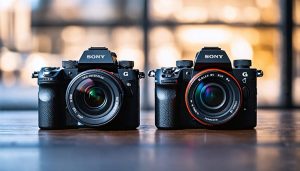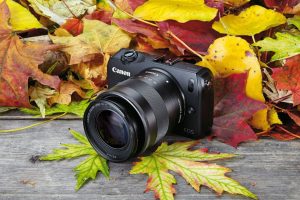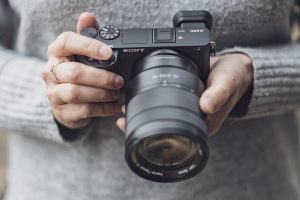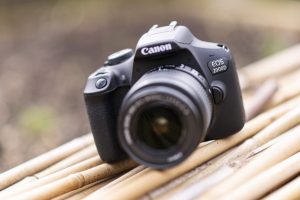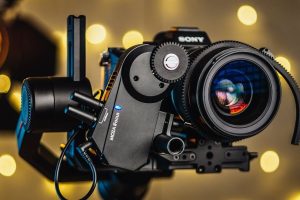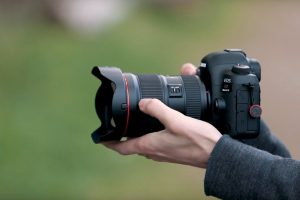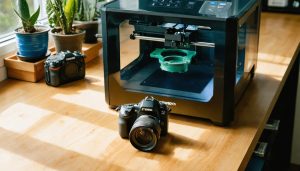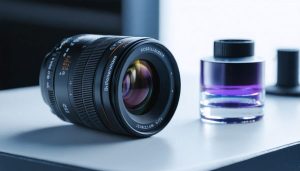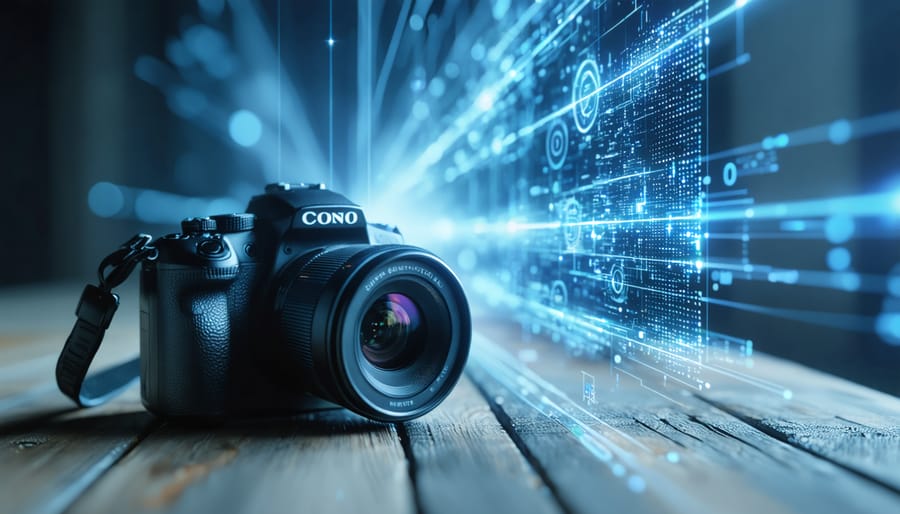
Phase detection autofocus revolutionized modern photography by delivering lightning-fast subject tracking and precise focus accuracy that manual focusing simply cannot match. Whether you’re capturing fast-moving sports action or ensuring tack-sharp portraits, understanding this sophisticated AF system is crucial for maximizing your camera buying guide decisions and overall image quality.
Unlike older contrast-detection systems that hunt back and forth for focus, phase detection uses specialized sensors to instantly calculate both the direction and distance your lens needs to move for perfect focus. This split-second analysis happens by comparing two images of your subject from slightly different angles – similar to how your eyes work together to gauge depth.
Professional photographers rely on phase detection AF because it offers unmatched speed and accuracy, especially in challenging conditions like low light or fast movement. By mastering this technology, you’ll dramatically improve your keeper rate and spend less time wrestling with focus, allowing you to concentrate on composition and capturing decisive moments.
How Phase Detection Autofocus Works
The Basic Principles
Phase detection autofocus works by analyzing how light rays from your subject enter the camera. Imagine splitting a beam of light into two identical parts – that’s essentially what happens inside your camera. Special sensors called phase detection sensors receive these split light rays and compare them to determine if your image is in focus.
When light passes through your lens, it hits a special mirror that’s partially transparent. This mirror directs some light to the viewfinder while allowing the rest to pass through to dedicated AF sensors below. These sensors contain pairs of light-sensitive pixels arranged in specific patterns.
If your subject is in perfect focus, the split light rays will land on matching positions on these paired sensors. However, if the subject is out of focus, the light rays will hit different positions, creating what’s called a “phase difference.” Your camera’s AF system measures this difference to determine not only whether the image is out of focus but also by how much and in which direction.
Think of it like trying to align two halves of a broken stick. When the pieces match perfectly, you’ve found the right position. Your camera does this automatically by adjusting the lens elements until the phase difference becomes zero, resulting in a sharp, focused image. This process happens incredibly quickly, which is why phase detection AF is particularly effective for capturing moving subjects.
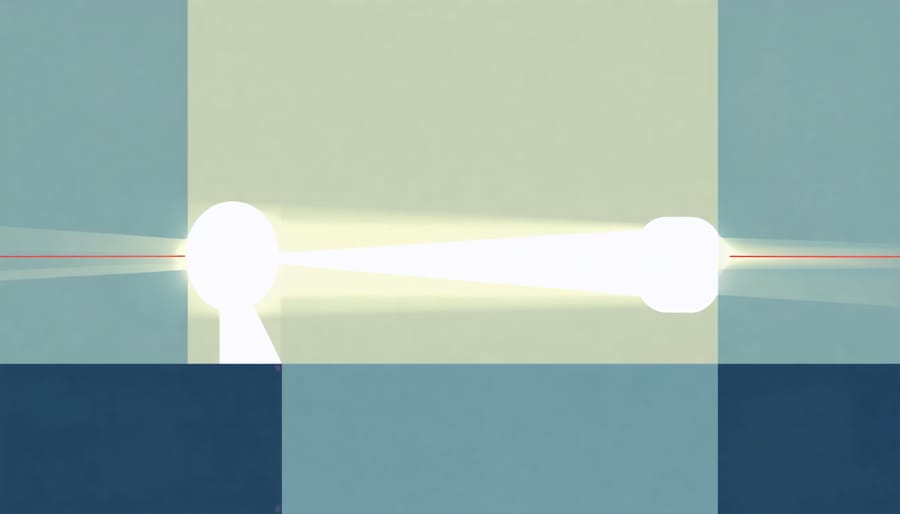
On-Sensor vs Dedicated AF Sensor
Modern cameras implement phase detection autofocus in two distinct ways: through dedicated AF sensors in the camera body or directly on the image sensor itself. Each approach has its unique advantages and characteristics that photographers should understand.
Dedicated AF sensors, commonly found in DSLRs, are separate modules positioned below the main mirror. When light enters the camera, a portion is redirected to these specialized sensors, which excel at tracking fast-moving subjects and performing well in low-light conditions. This traditional approach has been refined over decades and remains highly effective for sports and wildlife photography.
On-sensor phase detection, prevalent in mirrorless cameras and some modern DSLRs in live view, integrates special AF pixels directly into the main image sensor. These pixels are designed to detect phase differences while also contributing to image capture. This integration enables more comprehensive AF coverage across the frame and eliminates the need for separate calibration between the AF sensor and image sensor.
While dedicated sensors typically offer faster performance in challenging conditions, on-sensor systems provide greater accuracy and flexibility in focus point placement. Many contemporary cameras actually combine both methods with hybrid AF systems, leveraging the strengths of each approach. This evolution in AF technology gives photographers more reliable focusing options regardless of their shooting style or subject matter.
PDAF vs Other Autofocus Systems
Speed and Accuracy Comparison
When comparing different autofocus systems, phase detection consistently outperforms contrast detection in terms of speed, particularly in well-lit conditions. While contrast detection might take 0.5-1 second to achieve focus, phase detection typically locks on in 0.1-0.3 seconds. This difference becomes even more pronounced when tracking moving subjects, where phase detection can maintain consistent focus at rates of 10-20 frames per second.
In terms of accuracy, both systems have their strengths. Contrast detection traditionally offers higher precision in static subjects, especially in macro photography or low-contrast scenes. However, modern phase detection systems have significantly closed this gap, with dual-pixel and hybrid AF systems achieving accuracy rates comparable to contrast detection while maintaining their speed advantage.
Real-world performance varies based on shooting conditions. In bright daylight, phase detection systems typically achieve focus lock in under 0.2 seconds with a 95% success rate. Low-light performance sees these numbers decline, with focus times extending to 0.3-0.5 seconds and success rates dropping to 80-85%. However, this still outperforms contrast detection, which might take up to 2 seconds in similar conditions.
The latest hybrid systems combine the best of both worlds, using phase detection for initial focus acquisition and contrast detection for fine-tuning. This approach delivers both speed and accuracy, with focus times under 0.15 seconds and accuracy rates exceeding 98% in optimal conditions.
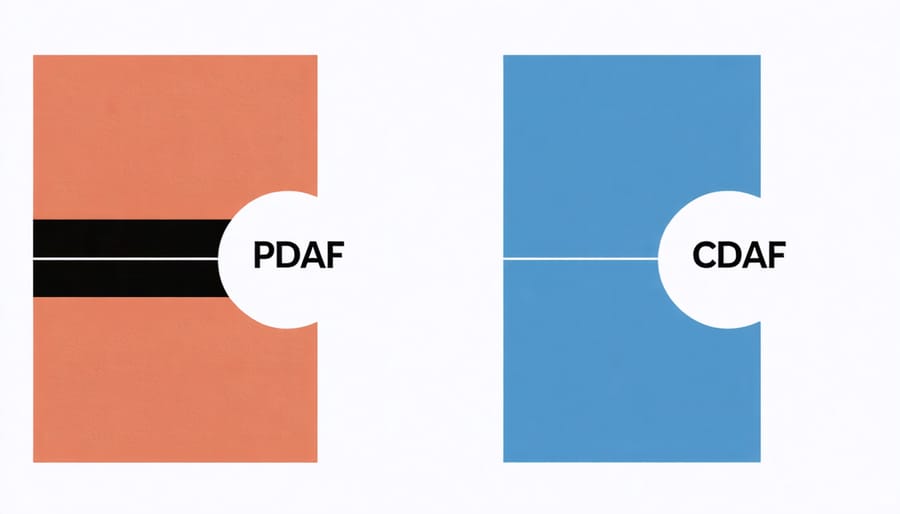
Real-World Applications
Phase detection autofocus truly shines in fast-paced shooting scenarios, making it the go-to choice for sports, wildlife, and event photography. When tracking athletes sprinting across a field or birds in flight, phase detection’s quick and decisive focusing helps capture sharp images consistently. Wedding photographers particularly rely on this system during crucial moments like the first kiss or bouquet toss, where there’s no room for focus hunting.
In contrast, contrast detection excels in controlled environments and static subjects. Studio photographers often prefer it for portrait sessions, product photography, and macro work, where precision is more important than speed. Its accuracy makes it ideal for capturing fine details in still life photography or ensuring sharp focus on a model’s eyes in controlled lighting.
Hybrid systems, which combine both technologies, offer versatility across different scenarios. Street photographers benefit from this dual approach, as they need both quick focusing for capturing fleeting moments and precise focus for architectural details. Similarly, videographers appreciate hybrid systems for their smooth focus transitions and accuracy during filming.
Understanding these real-world applications helps photographers choose the right focusing mode for their specific needs. For instance, switching to phase detection when photographing children at play ensures you don’t miss those spontaneous moments, while selecting contrast detection for landscape photography allows for precise focus on distant elements.
PDAF in Modern Camera Systems
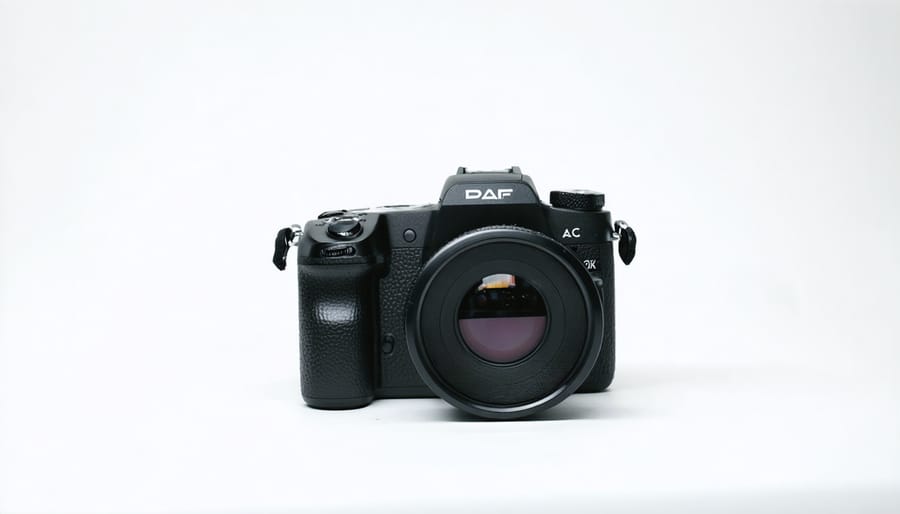
Mirrorless Innovations
The evolution of phase detection autofocus took a significant leap forward with mirrorless cameras, introducing innovations that have fundamentally changed how we capture images. Unlike DSLRs, which required a separate AF sensor, mirrorless cameras implement phase detection pixels directly on the main imaging sensor. This integration, known as on-sensor PDAF, has become one of the most significant mirrorless camera advantages in modern photography.
These on-sensor PDAF systems typically feature hundreds or even thousands of focus points spread across most of the frame, offering unprecedented coverage compared to traditional DSLR systems. This widespread coverage enables better subject tracking and more reliable focus acquisition, especially when photographing moving subjects or shooting in challenging compositions.
Modern mirrorless cameras have also introduced hybrid AF systems that combine phase detection with contrast detection, offering the best of both worlds. This dual approach provides the speed of phase detection with the precision of contrast detection, resulting in faster, more accurate focusing performance.
Perhaps most impressively, recent advances in mirrorless PDAF technology have brought features like eye-tracking autofocus and intelligent subject recognition, making it easier than ever to capture sharp images of people, animals, and even vehicles in motion. These innovations have made mirrorless cameras increasingly popular among both professional photographers and enthusiasts who demand reliable autofocus performance.
Hybrid Systems
Modern cameras often combine phase detection autofocus (PDAF) with other focusing technologies to create more robust and versatile focusing systems. The most common hybrid approach pairs PDAF with contrast detection autofocus (CDAF), leveraging the strengths of both methods while minimizing their individual weaknesses.
In these hybrid systems, PDAF quickly gets the lens close to the correct focus position, while CDAF fine-tunes the final focus for maximum accuracy. Think of it as a two-step process: PDAF provides the speed by determining which direction and approximately how far to move the lens, while CDAF ensures precise focus by analyzing the contrast in the image.
This combination is particularly valuable in mirrorless cameras, which rely heavily on their sensors for focusing. Manufacturers have developed innovative ways to embed phase detection pixels directly into the main imaging sensor, allowing for seamless transitions between PDAF and CDAF as needed.
The benefits of hybrid systems are especially noticeable in challenging situations. When shooting in low light, the system might lean more heavily on contrast detection for accuracy. During fast action, it might prioritize phase detection for speed. Some advanced cameras can even use both systems simultaneously, with sophisticated algorithms determining the optimal focusing strategy based on the scene and shooting conditions.
Many modern smartphones also utilize hybrid AF systems, demonstrating how this technology has become integral to contemporary digital imaging.
Maximizing PDAF Performance
Camera Settings
Optimizing your camera’s phase detection autofocus settings can significantly impact your shooting success. For static subjects, using Single-Shot AF mode (also called One-Shot AF or AF-S) ensures sharp focus while conserving battery life. This mode is ideal for landscapes, portraits, and still life photography.
When photographing moving subjects, switch to Continuous AF mode (AI Servo AF or AF-C). This mode continuously tracks subject movement, making it essential for sports, wildlife, and action photography. For unpredictable subjects, consider using Auto AF mode, which automatically switches between Single-Shot and Continuous AF based on subject movement.
AF point selection is equally crucial. For precise focusing, Single-point AF works best, allowing you to target specific areas like a subject’s eyes in portraits. Dynamic-area AF or Zone AF provides more flexibility when tracking moving subjects, as it uses multiple focus points around your selected point.
Most modern cameras offer customizable AF sensitivity settings. Higher sensitivity enables faster focus transitions but may result in “hunting” in low light. Lower sensitivity provides more stable focusing but might struggle with fast-moving subjects. Start with medium sensitivity and adjust based on your shooting conditions.
For low-light situations, prioritize using central AF points, as they’re typically more sensitive. Enable your camera’s AF assist beam if available, and consider using back-button focus for greater control over when your camera engages autofocus.
Remember to adjust these settings based on your specific shooting scenario. What works for a peaceful landscape session might not be suitable for a fast-paced sports event.
Shooting Techniques
To maximize your phase detection autofocus system’s potential, it’s essential to understand several key shooting techniques. First, always ensure your AF points are positioned strategically over your subject’s most important features – typically the eyes for portraits or the head for wildlife photography focusing techniques.
Start by maintaining proper camera handling to minimize camera shake, which can confuse the AF system. When shooting moving subjects, use continuous AF mode (AI Servo for Canon, AF-C for Nikon) and keep your selected AF point on the subject while tracking their movement.
For static subjects, single-shot AF mode typically works best. Consider using back-button focus to separate focus activation from your shutter release, giving you more control over when and how your camera focuses. This technique is particularly useful when recomposing shots or photographing subjects at varying distances.
In low-light situations, aim your AF points at areas with the highest contrast or use the center AF point, which is usually the most sensitive. If you’re shooting through obstacles like fences or foliage, switch to a single AF point to ensure your camera focuses on your intended subject rather than the foreground elements.
Remember that phase detection AF works best with lenses that have maximum apertures of f/5.6 or wider. When using teleconverters or slower lenses, you might need to rely more on manual focus or switch to live view for critical focus situations.
Phase detection autofocus has revolutionized modern digital photography, transforming how we capture fleeting moments and moving subjects. From its humble beginnings in DSLRs to its sophisticated implementation in today’s mirrorless cameras, PDAF technology continues to evolve at a remarkable pace.
The integration of on-sensor PDAF points has dramatically improved autofocus performance, particularly in mirrorless systems. Combined with advanced algorithms and artificial intelligence, these systems can now track subjects with unprecedented accuracy and speed. Eye AF, animal detection, and vehicle tracking are just the beginning of what’s possible with modern PDAF technology.
Looking ahead, we can expect even more innovative developments in PDAF systems. Manufacturers are working on increasing the density of phase detection points, improving low-light performance, and developing more sophisticated subject recognition algorithms. The integration of machine learning and AI will likely lead to even more intelligent focusing systems that can predict subject movement and adapt in real-time.
For photographers, this means more reliable autofocus performance across challenging shooting scenarios, allowing them to focus more on composition and creativity rather than technical focusing concerns. Whether you’re shooting sports, wildlife, or casual family moments, understanding and utilizing PDAF technology will continue to be crucial for achieving sharp, well-focused images in any situation.


